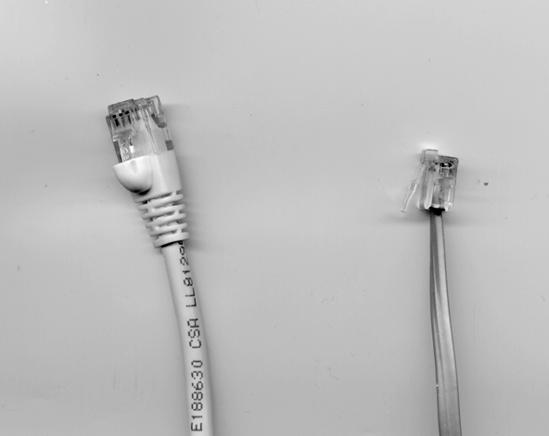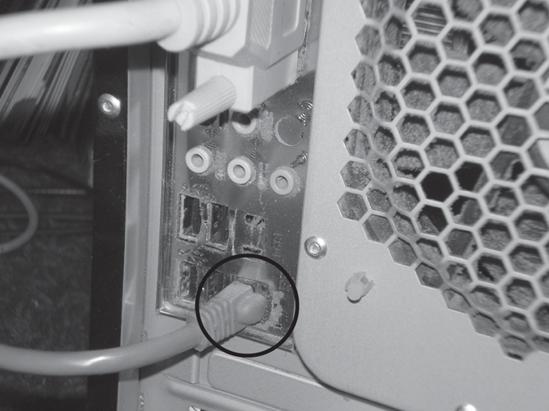Every computer on a network uses some kind of internal or external connector to send and receive data to and from other computers. This connector, along with the hardware that controls it, is called a network adapter or network interface because it's the point of contact between the computer and the network. In a small home or business network, the network interface can be either an Ethernet port that communicates with the network through a cable or a wireless transmitter and receiver that exchanges radio signals with a Wi-Fi base station. This chapter describes the most common wired Ethernet network interfaces. Chapter 8 provides similar information about connecting your computer to a network through a wireless interface.
Every modern wired Ethernet interface has an eight-pin socket (an Ethernet port or jack) that mates with the plug on an Ethernet cable. Both the plug and the socket follow a standard called RJ-45 that specifies the size and shape of the connectors and the signals that move through each of the eight pins (RJ stands for Registered Jack). RJ-45 connectors are similar to the six-pin RJ-11 plugs and sockets used on telephones, but the RJ-45 is slightly larger to allow for the additional pins. Figure 7-1 shows both an RJ-45 Ethernet plug and an RJ-11 telephone plug.
Figure 7-1. An RJ-45 data plug (left) has eight wires; an RJ-11 telephone plug (right) has four or six wires.
In addition to the port itself, an Ethernet interface also includes some internal hardware that converts the data in both directions between the format that the computer's central processor can handle and the format used by the network. This hardware can take several forms. It can be:
Almost all the computers built within the past few years have built-in Ethernet ports. On desktop and tower computers, the RJ-45 jack is on the back of the case, as shown in Figure 7-2. On laptop computers, the Ethernet port is usually on either the back or the side of the case.
If your computer has a built-in Ethernet port, the driver software that instructs the central processor how to handle network data is on the software disc supplied with the computer or the motherboard. If your computer came with the operating system already installed, the driver is already in place. However, if you assemble your own computer from parts, you might have to install the network driver supplied with the motherboard or a third party after you load the Windows, Linux, or Unix operating system.
If your computer has a built-in Ethernet interface, it's sometimes necessary to turn off that interface and use a network adapter on an expansion card or some other kind of external network interface. This might happen when you want to use a faster network than your built-in adapter can handle (such as a Gigabit Ethernet network) or if the onboard network controller doesn't work correctly.
To turn off the internal network interface, you must open the computer's BIOS settings utility and find the option that enables or disables the onboard LAN controller or some other option with a similar name. In most BIOS utilities, the LAN option is buried under two or three menu levels.
The BIOS settings utility is a set of controls that load configuration settings when you turn on the computer. These settings are an essential part of the computer's startup sequence because they tell the computer where and how to find the operating system. To run the BIOS settings utility, turn off the computer, then turn it on again and immediately press the del (delete) or F1 key (depending on the type of BIOS your computer uses).
If you're not comfortable changing the BIOS settings, just leave them alone. When you install another network interface, Windows and other operating systems will recognize both the internal and external adapters. In most cases, it won't matter if both of them are active at the same time.
On the other hand, if your network connection doesn't work when you turn on the computer but the rest of the network is okay and all the network cables are plugged into their appropriate sockets, it's possible that the internal adapter has been disabled by accident. This should never happen unless somebody goes into the BIOS utility and changes the setting, but it's possible, especially if the computer is in a public location where other people can mess with it.

